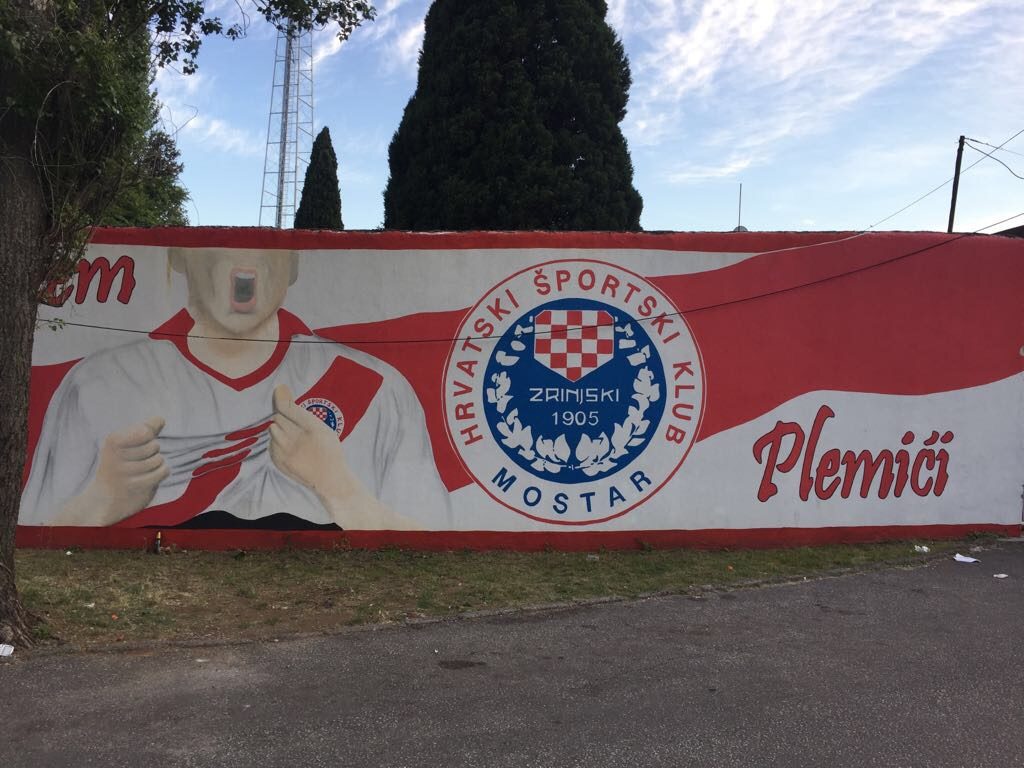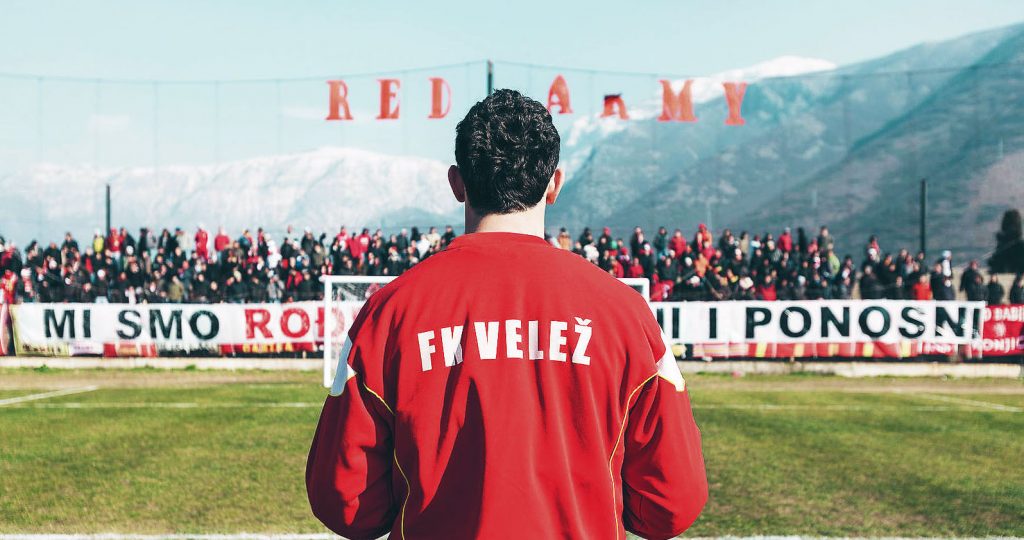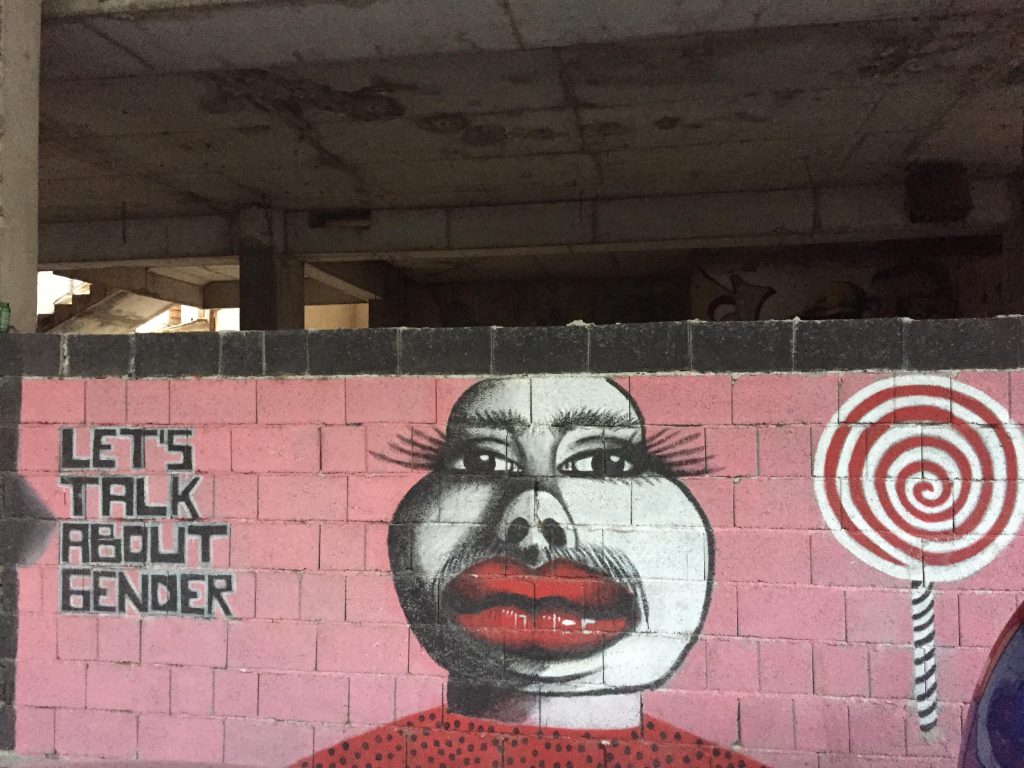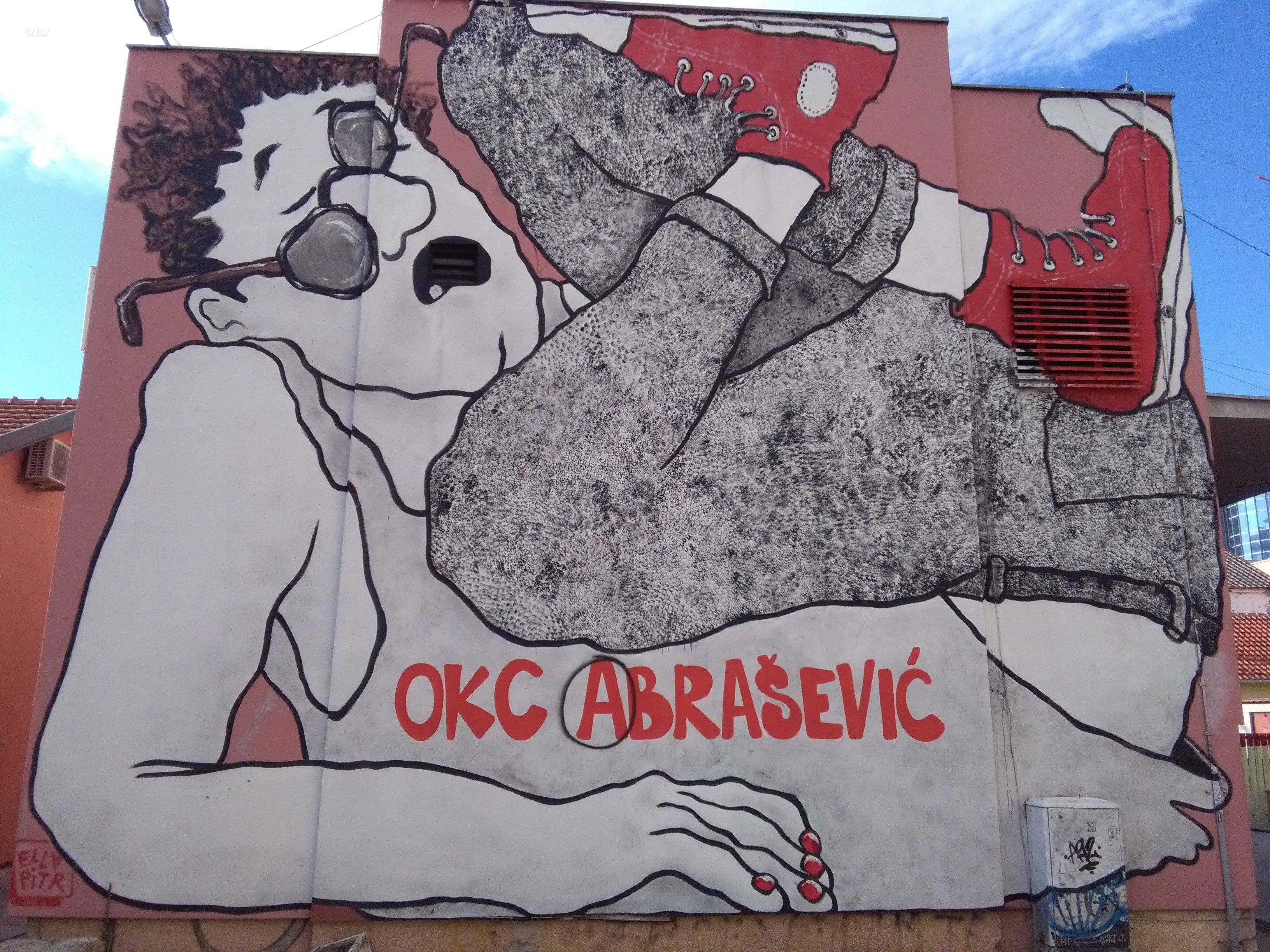From football stadiums that tell you more about Mostar than tour guides, cultural centres and cemeteries: Check out these places in the city.
1) OKC Abrašević
This independent cultural centre, music venue and café bridges the gap between the largely segregated communities in Mostar. Great place for a beer, a chat and a show. Find out more about it here!

2) HŠK Zrinjski Mostar at Bijeli Brijeg Football Stadium
Alright, Zrinjski Mostar has been the best football team in Bosnia and Herzegovina for the last couple of years. But what is more interesting than an actual match is the history of the stadium and the club. It will tell you more about the city than any official tour! You can read more about the crucial role of the stadium for the city of Mostar here!

3) FK Velež Mostar at Stadion Vrapčići
Velež is a legend and a tragedy! This club was once the heart of football in Mostar and made its fans proud in Yugoslavia and Europe. Today it is still struggling with what happened to the city during the Bosnian war. Its current stadium outside of Mostar also tells you something about the state of the country. Here is more about the club and its importance for the city!

4) Pavarotti Music Centre and Mostar Rock School
Let there be rock! This music centre was set up at the old building of the elementary school in Mostar after the war in 1997 with the support of Luciano Pavarotti, Brian Eno and members of U2. It is a place for creative learning and practice with elements of creative therapy for young people, artistic programs, lectures, workshops and events.
The Mostar Rock School is also based at the Pavarotti Music Centre.
5) Street Art and Graffiti
Mostar is a great place for street art and graffiti. The annual Streets Arts Festival brings artists from all around the world and their work to the streets of Mostar. A lot of graffiti can also be seen on abandoned houses on Bulevar street and around the Spanish Square.

6) Partisan Memorial Cemetery
The cementery is located on Bijeli Brijeg hill and displays all the features of a complex architectural, aesthetic and landscape design. It is a unique monument in the urban scale of the city of Mostar. It was built in 1965 in honor of the Yugoslav Partisans of Mostar who were killed during World War II. It was designed by the architect Bogdan Bogdanović, a partisan himself.
The city: Mostar
The largest city in Herzegovina, the southern part of Bosnia and Herzegovina, has about 115,000 inhabitants. During the war about 2,000 people died – civilians and combatants. Ten thousands fled, but the majority came back after the end of the war in the late nineties.
Before the war, the Mostar municipality had a population of 43,037 Croats, 43,856 Bosniaks, 23,846 Serbs and 12,768 Yugoslavs. Most of the Serbian population has left the city (around 5,000 remain). Mostar has not held communal elections since 2008 because of arguments concerning the administrative structure of the city practically dividing the city into two parts. Its most famous site is the Old Bridge that got destroyed during the war and was rebuilt in 2004.
The country: Bosnia and Herzegovina
The country declared independence from Yugoslavia on March 3, 1992. The following war killed more than 100,000 people and was ended with the Dayton agreement on December 14, 1995. Since then economic and political progress has been slow. Since the end of the war approximately 150,000 young Bosnians have left the country, and around 10,000 young people still leave the country each year.
In 2016 the unemployment rate was about 25 percent. Youth unemployment was even higher than 65 percent. Bosnia has a population of approximately 3,5 million people with an average salary of around 400 Euro. The political system of the country, which has been based on ethnic identity since the war, is considered to be one of the world’s most complicated systems of government.
